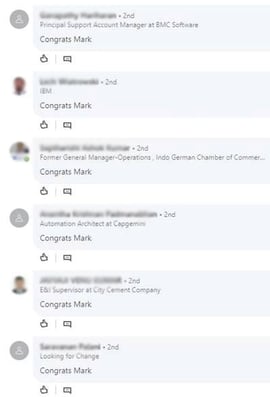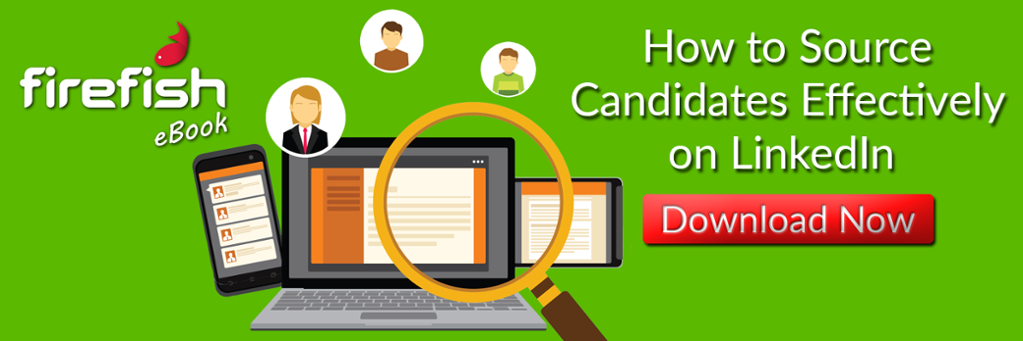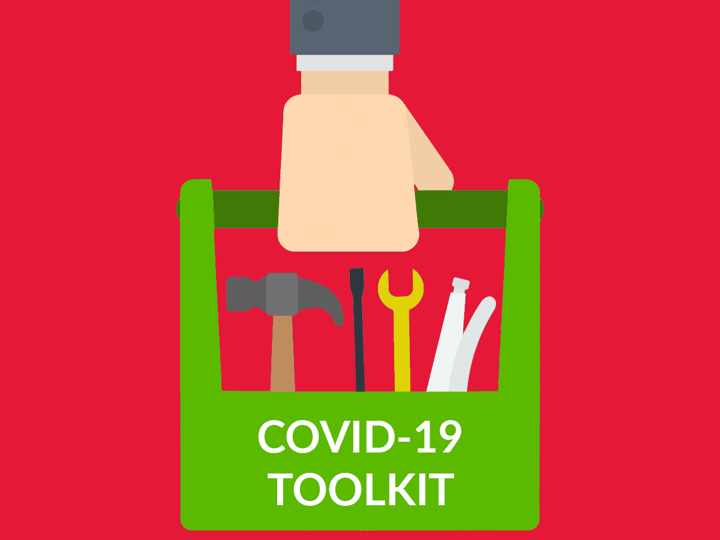As recruiters, we rely on LinkedIn a lot. We use it to build and strengthen our networks, to keep up with industry trends, and most importantly - for building our personal brands.
But spending lots of time on LinkedIn doesn’t necessarily mean you’re benefiting from it – in fact, as an industry we make mistakes on the platform every single day that actually work against us rather than help build our credibility as great recruiters.
So, what sorts of LinkedIn mistakes are we making on a daily basis without realising it?
1. Posting automated comments
It’s easy to think using LinkedIn’s automated comments buttons is a good way to engage with your network quickly and efficiently (I guess that’s why they built the feature, after all!). But in practice, using these buttons to save yourself a few seconds here and there can actually destroy your credibility pretty quickly.
 These buttons go against all social selling best practices, which are about providing value and being personable online. If you’re not even willing to invest a few seconds to write a comment, you’re adopting a spray and pray methodology of checking in with your connections – and people see straight through it.
These buttons go against all social selling best practices, which are about providing value and being personable online. If you’re not even willing to invest a few seconds to write a comment, you’re adopting a spray and pray methodology of checking in with your connections – and people see straight through it.
Here’s an example on the right that I noticed on my LinkedIn feed just the other day. A connection posted that they’d just started a new role, and I was shocked at the long line of totally empty responses that came flooding in from his connections.
Unsurprisingly, Mark ignored all the automated ‘Congrats!’ messages and bee-lined straight to the personal comments, which he responded to.
The last thing you want is to make it look like you don’t care about your candidates or clients, so just think about how this looks to your network.
2. Sending freezing cold InMails
You wouldn’t walk up to a stranger in the street and ask them if they want to keep in touch for no apparent reason (if you do this, you should probably stop!). You might think that your generic InMail template is perfectly fine to send to a bunch of interesting candidates you’ve found, but it’ll be painfully obvious to those on the receiving end that it’s a generic InMail blast.
Sending bulk InMails is even more unforgivable on LinkedIn because all the information you need to send an engaging personalized message is right at your fingertips! It takes 30 seconds to gather the info you need from the candidate’s profile to make your message personal, so there’s really no excuse for this.
You need to customise your InMails for your candidates to show you actually care about matching them to a role that will be appealing to them – you’re not just reaching out cause they tick all the boxes for the job brief you’ve been given. And if you’re worried about the extra legwork involved here, remember that quality will always trump quantity on LinkedIn and your response rates will skyrocket if you spend more time on this stuff.
3. Abusing LinkedIn ‘likes’
 Ever had someone you barely know randomly ‘like’ a dozen things you posted on LinkedIn six months ago – all at the same time? It’s like a scene from a horror movie! Who even is this person? What’s possessed them to scroll through six months of my posts to ‘like’ these? Do they know where I live?
Ever had someone you barely know randomly ‘like’ a dozen things you posted on LinkedIn six months ago – all at the same time? It’s like a scene from a horror movie! Who even is this person? What’s possessed them to scroll through six months of my posts to ‘like’ these? Do they know where I live?
Or, to give a less traumatic example, do you have any LinkedIn connections who you can guarantee will ‘like’ every one of your posts within seconds of you sharing them?
If either of these situations sound familiar to you, you’ll know how negatively this sort of behaviour can impact your impression of someone. These spray and pray ‘like’ blasts aren’t flattering, they’re just annoying.
Research has also shown that likes alone don’t achieve much on LinkedIn anymore – unlike comments, liking a post doesn’t increase its visibility. If you really want to show support and increase your reach, leave valuable comments or use open-ended questions to get a discussion going. This is what you’re setting out to do, not freak them out!
4. Pulling out the mutual connection card (when there isn’t one)
I get loads of connection requests from recruiters saying something along the lines of, “Hey, I saw we’re both connected to Joe Bloggs. I’m reaching out because…”
If I knew Joe Bloggs personally this could maybe grab my attention (but even then, being connected to someone means very little nowadays!), but nine times out of ten it isn’t someone I’ve got a true mutual connection with. They’re probably just someone in my industry I can’t remember connecting with.
Referencing a mutual connection as though it’s some sort of referral when that connection hasn’t actually told you to reach out can be a dangerous game.
Instead, make sure you ask the mutual connection if it is alright to reach out to this candidate and naming them as a mutual connection – explaining exactly why you want to get in touch with the candidate. That way, if the candidate goes back to the mutual connection, they’ll know exactly who you are and it’ll give the impression that you’ve a genuine interest in that candidate rather than simply connecting to grow your candidate network.
Candidates have zero tolerance for social spammers these days. In fact, if you pull stunts like these, there’s a real chance your message will end up as a screenshot and shared and shamed on the platform as an example of bad recruitment. Give people the respect they deserve, be human and your authenticity and value will shine through.
If you're looking for more tips on how source effectively on LinkedIn, download our free eBook below:
Alan McFadden
Alan is the Associate Director of Growth at Firefish. An agency recruiter in a former life, he loves helping recruiters find ways to recruit smarter.




